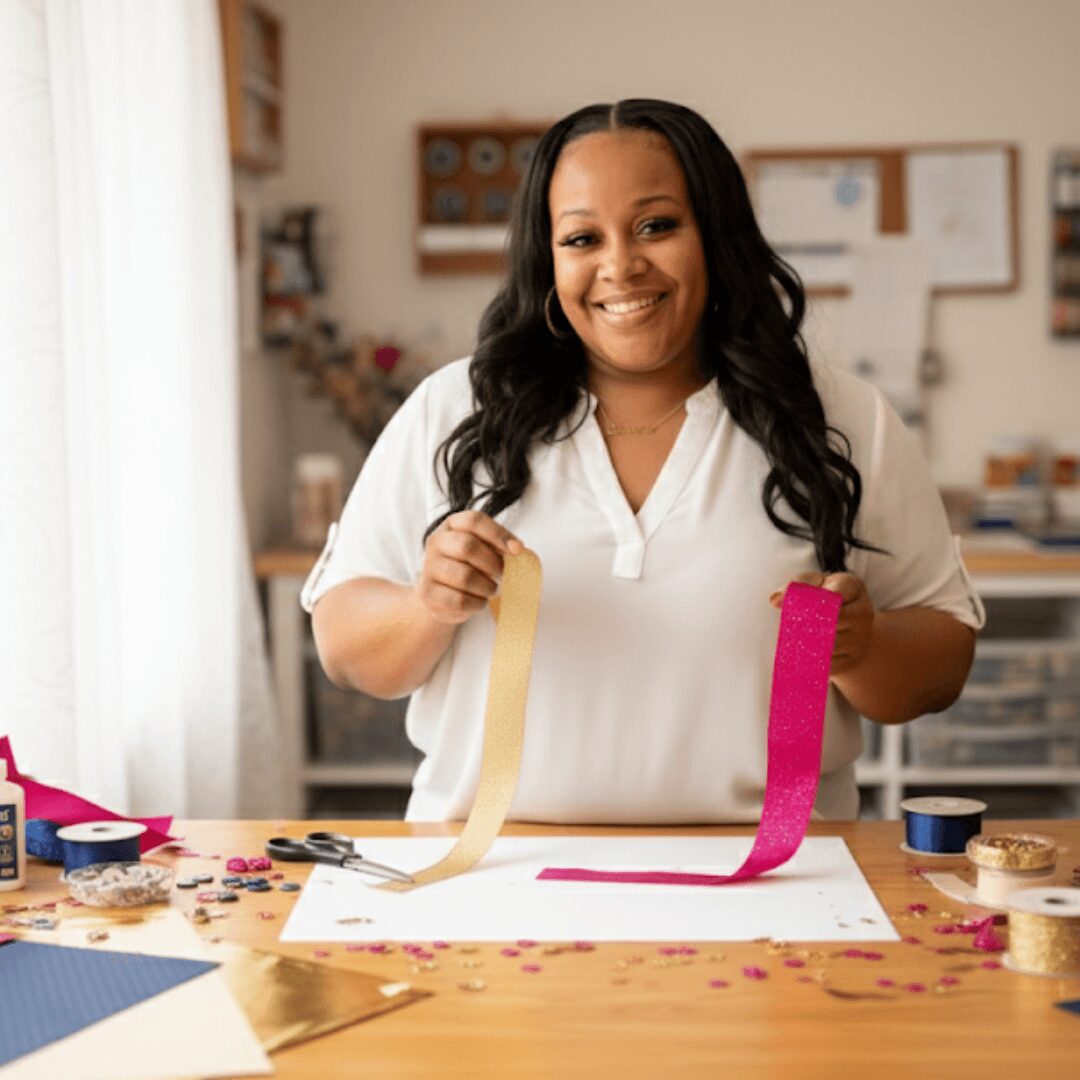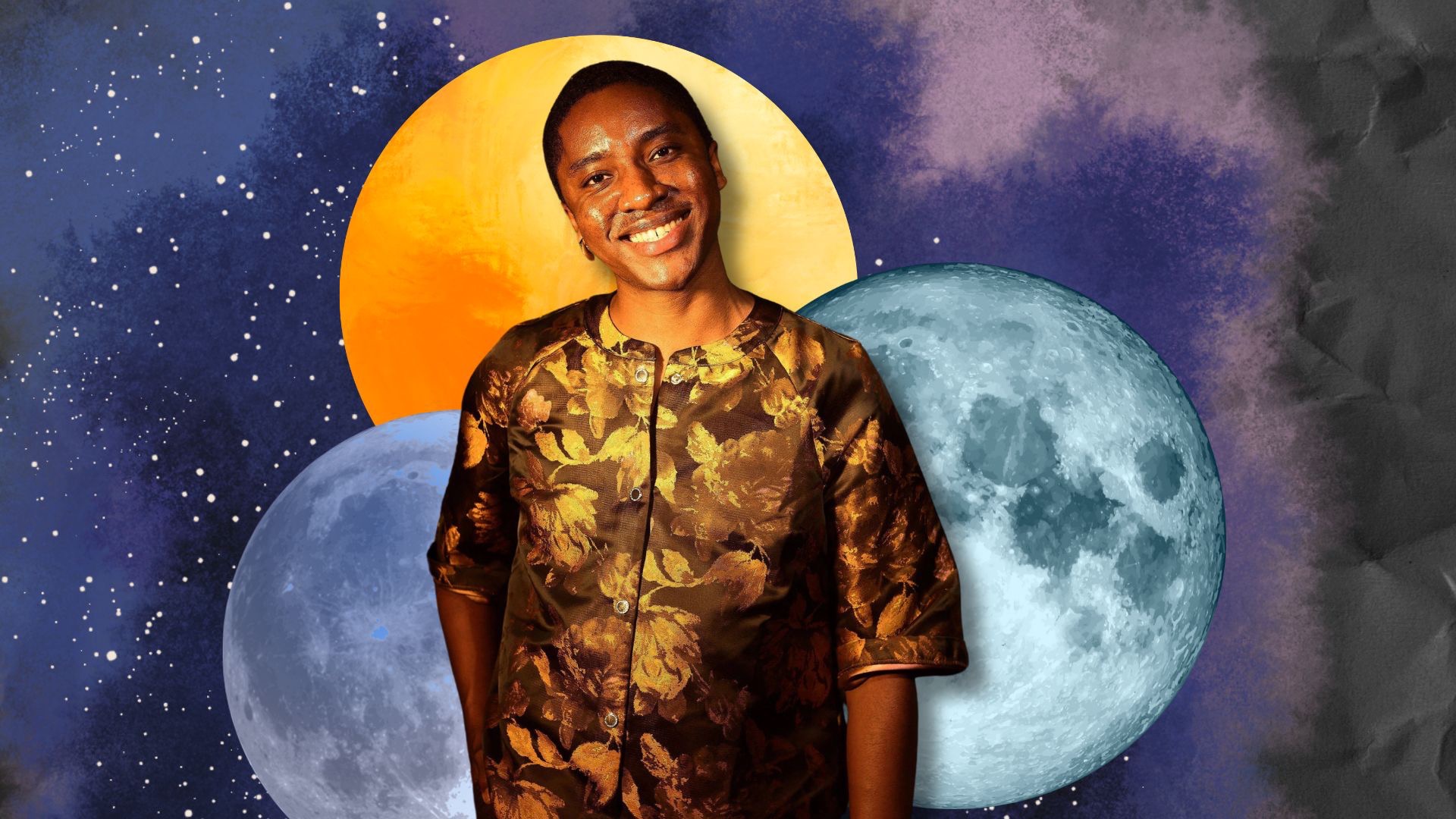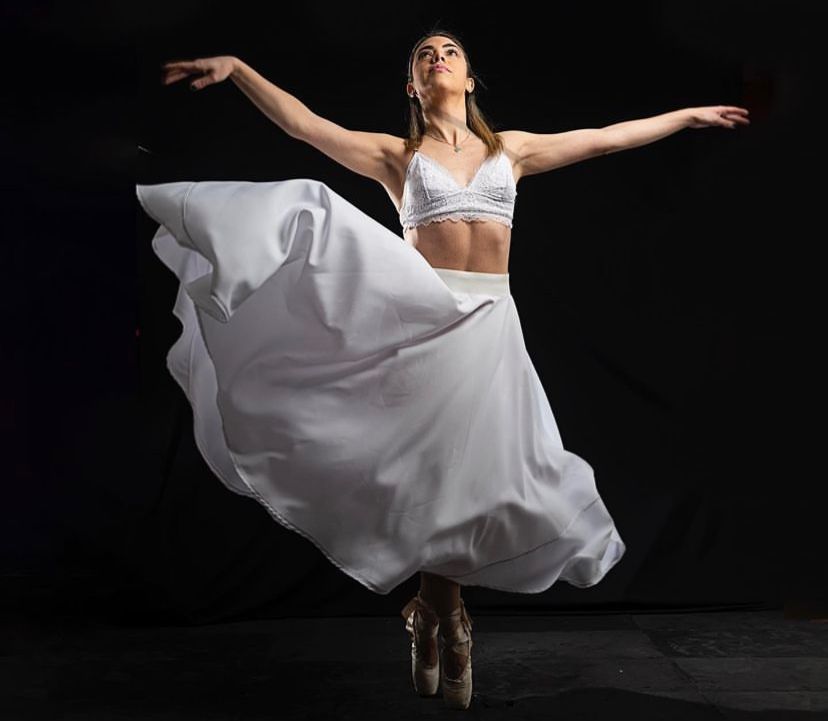Alright – so today we’ve got the honor of introducing you to Alli Harvey. We think you’ll enjoy our conversation, we’ve shared it below.
Alli, so great to be with you and I think a lot of folks are going to benefit from hearing your story and lessons and wisdom. Imposter Syndrome is something that we know how words to describe, but it’s something that has held people back forever and so we’re really interested to hear about your story and how you overcame imposter syndrome.
It was about mid-interview when the relief hit.
“I’ll let you in on something,” Steve, the cohost of the Art Box Podcast, said. “Most of our guests don’t feel terribly comfortable identifying themselves as artists. That person over there – he’s the true artist, but not me, is kind of how it goes.”
I realized I’d quietly felt this way for a long time.
Here were my reasons for wondering if I was a fraud:
– My painting process is from photo references. Surely “real” artists paint from plein air, memory, or whatever mysterious and exotic artistic inspiration. I once had someone come up to me painting in front of the Mobile Studio and walk away, seemingly disappointed, when they realized I was painting from a photo. I tried to laugh it off and let it go, but it stuck with me.
– I paint to invoke awe. At an art opening I once hosted, a random attendee commented that he could “see the darkness in my paintings”. My college roommate and I later had a field day with that comment, the joke being that the darkness in my paintings was in, like, the contrast of big puffy clouds. There is no subversion in my art. My Big Comment and Contribution as an artist is simply that I think each of us and the world is a better place when we have access to and can connect with awe. So I paint what I find gorgeous. …not what I find “dark”. This feels, at its best, meaningful and worthwhile. In my lower moments, I wonder if I’m shallow.
– I self-promote. I know a lot of people who say, oh I know I should self-promote, I should do the social media thing, make the calls, put myself out there – but it’s just so uncomfortable and weird feeling, I find it really hard to do. I agree with all of the above, but I also know it’s necessary. So I do the thing(s). But maybe “real” artists are above that; or not adept at it at any rate – I also hear that a lot, that many artists are just not good at the marketing side of things. Which leads me to the final reason I could be a fraud:
– I’m a business, man. I unabashedly work to make money at my art. I refuse to buy into the notion of the starving artist. And, I don’t go traditional artist pathways for the most part, skipping many juried opportunities, museums, grants, residencies, and galleries in favor of operating like a small business. This sets me apart, but maybe the brazenness with which I promote Alli Harvey Art somehow undercuts the “art” because I am doing my damndest to both create and survive – thrive, actually – within this money structure we humans have set up. Shouldn’t my art be more pure? Shouldn’t it need to exist simply for the sake of itself to be “true”, to be real?!
I share all of this because now, a couple years post-interview, I feel secure enough to rattle it off and I want to share it with other artists and creatives who might secretly also share these insecurities. I will tell you, it felt validating to know that I shared this secret with other artists who, surely, were “real” artists. It was freeing to openly name it, like maybe I could let it go.
Here’s how I think you know you’re a real artist:
– You create something that otherwise doesn’t exist in the world. Maybe it’s combining existing elements in novel ways, like a DJ, mixologist, make up artist, or collagist. Maybe it’s completely original, like drawing – analogue or digital – writing, creating music, or many paintings. Or, maybe it’s kind of like my art – interpretive, like photography, which is about the artist selecting, framing, and curating a singular perspective.
– There is a “why” behind your work. It could be the “why” is to say there is no why, life is random – that would still be a purpose behind something created. Maybe the “why” dawns on you over time; maybe it changes. But there is some reason why you go from one state – not creating – to another, of working to bring into being something that wasn’t there before. It’s up to each artist to say what that is; the world will also likely also interpret it in their own way(s).
I think it’s truly that simple. There are so many ways artists exist within and contribute (or don’t) to the world. Many of us have our art as side hobbies; some don’t develop until later in life, or at all. You may not like someone’s art, or prefer one artist’s method to another. You may see one artist as being newer to their craft, vs another who is more practiced and skilled.
But to all the other artists out there struggling with that word and whether it applies to you: be fearless about letting yourself inhabit it. Being an artist is like being any other kind of human, in that there is no destination state and it will always be an aspect of you that is growing and changing. Don’t wait to feel like you’ve “made it”. Make it. Make it every day and keep taking steps you know to be right for you. Don’t be daunted by the many million, beautiful other examples of “artist” out there – each of us is just trying to do our best to be ourselves and hone our own best work. The best thing you can do for the world is get better at being you and helping that thing you want to create be your best work, until the next time, when you outdo yourself. And again and again and again.


Thanks for sharing that. So, before we get any further into our conversation, can you tell our readers a bit about yourself and what you’re working on?
I believe each of us deserves daily access to awe. I strive to connect with and invoke that feeling in my paintings. My artwork frequently features vivid natural scenery that I feel lucky enough to access, whether in real life or via photo references provided to me. Home is with my friends, family, and in the 19′ Airstream Mobile Art Studio which I share full-time with my husband. Since leaving Alaska in 2023 we can most often be found in the desert southwest, which is frequently the focus (along with AK) of my art. I love to spend time outdoors and feel like a perpetual beginner, which is part of what motivates me to paint: I want to share my sense of wonder.
It’s never been enough for me to enjoy something on my own. As soon as I find out something worth knowing or experiencing, I want to tell ten people about it. I feel that having a sense of connection with the world and each other makes our lives richer, and by extension, the world a better place. When I paint, I’m focusing my attention and yours on those moments that are exquisitely beautiful.
I do events throughout the year based out of the Mobile Art Studio, custom commissions based on photographs provided to me (often recognizing a significant life milestone for someone, be it the person commissioning the painting or someone they’re planning to give it to), limited-run, hand signed notebook and other prints, “fridge paintings” (ie magnets), greeting cards, and of course an ever-changing gallery of original paintings that are available for purchase online or at my in-person events.


If you had to pick three qualities that are most important to develop, which three would you say matter most?
Two pieces of feedback I hear a lot:
“You’re busy! You do a lot. Do you ever rest?!”
and
“You have excellent boundaries.”
The interesting thing is 1) both observations are true and not true (more on that below), 2) to the extent that they’re accurate, they’re very much related.
First of all: yes I rest! If I didn’t set supposed “boundaries” for myself (I dislike that word and can’t wait to share why in a minute) that’s probably most of what I would do with my life. Loll, loaf, mouth breathe, bask. There’s nothing wrong simply inhabiting and enjoying life. Much of my own, and likely yours, is spent elaborately constructing opportunities to maximize that very feeling. But for me to fully experience life while also living my values I have to do something with myself.
I look at it this way: the most terrifying thing I can imagine is getting to the “end”, whenever that is, looking back at my life, and feeling regret about frittering it away. There will always be some fritter; that’s fine. But if I get to my deathbed and say to myself what did you do?! That prospect, my friends, motivates me into quite a bit of logging off social media, lest another hour of drooling and scrolling go by.
So this brings us to “boundaries”, a popular word that I – again – do not like.
The word “boundary” invokes something rigid. To me, it sounds like digging a moat-like trench around oneself and saying thou shalt not cross. A boundary is a protection; a safety. It’s a line on a map.
While the idea of a thick, wall-like protection sounds soothing to me, real life informs me that it rarely if ever exists in nature. Comets blaze right through the earth’s protective atmosphere. Animals ford rivers. Human beings raid others’ clearly defined space.
When I try to create rigid boundaries, usually an overcompensation, I fail. There is so little in life that is straight up right and wrong, as much as I crave the certainty of that worldview. Safety exists on a continuum. The nature of being is such that I am never actually fully safe, emotionally or physically.
Sorry. Something or someone could hurt me at any moment. That is completely out of my control.
But – BUT. I do have power and say-so over the decisions I make for managing my body and my attention, and how I explain and negotiate that with others and my physical environment. This gives me quite a bit of autonomy. After all, this mind and body makes up my entire perspective and lived experience of the world. This is me.
I don’t have a better word than “boundary”, but how I think of it is 1) proactive – doing what I say I will do, and 2) reactive – noticing if I feel compromised by an action or situation, and figuring out what I need to right it.
Proactive actions include saying: self, you will move your body daily because it makes you feel better and it’s good for your long term health or I’m going to use my good morning focus to immerse myself in a painting tomorrow. I’ll put it away by noon, take a walk, and then pivot into consulting, or put your damn phone on “Do Not Disturb” mode – you can miss one hours’ worth of the family text thread currently recapping Housewives.
Doing what I say I will do helps me follow through on my commitments to myself to create and inhabit meaning in my life. I can paint, write, consult, hike, or spend time with friends/family with my full self.
But that leads me to the “reactive” part. I do quite a bit to manage my focus which for me is a fickle, annoying toddler who is chaotically and giddily soaking up whatever happens to be remotely shiny and in grabbing distance. Usually my phone.
All sorts of predators lurk in trying to steal her away. I have to construct elaborate “hacks” to guide focus where I want her, and protect her from the elements.
Some of these include:
– Being scrupulous with use of my personal cell phone. I have a phone fully dedicated to art, and a personal cell. There’s often unspoken pressure in consulting to be available, all the time. I’m not. I give clients my cell only for logistical, and very rarely for other extenuating circumstances, and even then I ask them not to share it.
– Communication protocols and windows. With my coworkers, I’m available via my cell phone for time sensitive questions that, truly, only I can answer but I ask for folks to default to emails that I check when I’m ready. After all, when I’m painting and get a consulting-related text? My brain is now humming on work, and not being present. I keep a work calendar updated up to the hour so folks know when I’ll be available, and clients/coworkers are welcome to set up meetings with me even if I’m currently out of the office.
– Tracking tasks. Part of my focus is my limited memory. I don’t want to use much of my brain tracking disparate tasks/context living in phone conversations, chats, or text messages. I have an ongoing check list, notes from phone calls/meetings, and I use email as a living memory. Text or gchat is for quick coordination or fun.
Again: I can’t control who does or does not call me, or when. But I can control who gets the number, what I say about it, and the request(s) I make if/when something isn’t working for me.
Maybe it sounds scary or overly onerous to have these kinds of conversations with people, like I’m throwing a hammer down. It’s gotten a lot easier over time. For me, part of it is not framing these conversations as “boundary setting”. I actually never use that word. I approach them as stating an action, likely intent, impact on me, and request for the future.
Example: “Hey, when you texted me on my off-day about that consulting related thing, I was painting. The text threw my focus for a loop. I don’t think that was your intent. Will you default to e-mail and only text me if it’s something that can’t wait?”
Then we talk about it, and it’s fine. Rinse, repeat next time it inevitably happens with someone else – after all, people have wildly different approaches to using their phones and managing their own attention.
I share all of this because this impression of me “doing a lot” coupled with my supposed excellent boundary setting is really simply about guiding attention. When I art, I art. Consulting, I’m both feet in. When I spend time with my friends, I’ve finally gotten to the point of putting my damn phone away. There’s plenty of in between and off time for the scrolling and Wikipedia rabbit holes, because life is long, but in the big scheme of things there’s just so much I hope to do. Most importantly I want to experience it all, to the very best of my ability.


How can folks who want to work with you connect?
I’m looking to partner with businesses that have an office or retail space that would benefit from a rotating display of my art and have clients/customers consistently moving through. The benefit to the owner/manager is quickly filling your space with beautiful art that both you & your clients will appreciate, without having to do a big push to find it or manage it.
Ideas for partnering:
– Show me the space(s) you would like to fill. I’ll bring paintings to choose from and hang them, gallery-style, along with information on the painting and my contact information. If a painting sells, I’ll replace it.
– Commission me to create artwork unique to your business. It could be a painting featuring a visual iconic to your region or neighborhood, relevant to your branding, or of your building.
I’m open to other ideas! The best way to connect with me is via the contact form on my website, alliharveyart.com, or sending me a DM on social media (Instagram or Facebook) @aharvart.
Contact Info:
- Website: https://www.alliharveyart.com
- Instagram: aharvart
- Facebook: aharvart


so if you or someone you know deserves recognition please let us know here.




